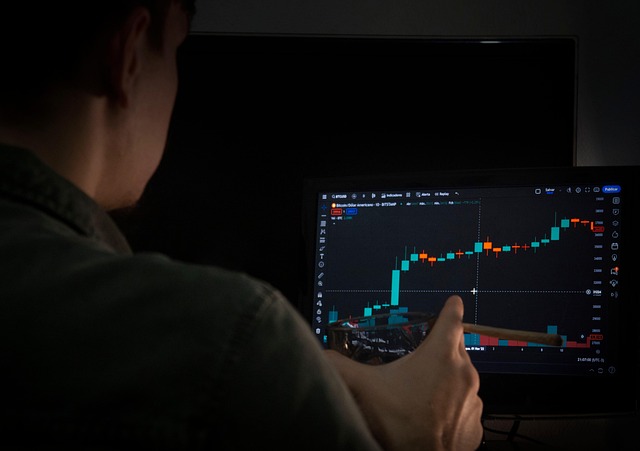What Causes Altcoin Season in 2025? An In-Depth Analysis
Author: Jameson Richman Expert
Published On: 2025-08-03
Prepared by Jameson Richman and our team of experts with over a decade of experience in cryptocurrency and digital asset analysis. Learn more about us.
In the rapidly evolving landscape of cryptocurrency trading, understanding the multifaceted causes behind altcoin season in 2025 is essential for investors seeking to optimize their portfolio performance. Altcoin season, characterized by a period when alternative cryptocurrencies outperform Bitcoin in terms of price appreciation, results from a complex interplay of market dynamics, investor psychology, technological innovation, macroeconomic influences, and regulatory developments. Recognizing these triggers allows traders and investors to position themselves advantageously in anticipation of significant market moves. This comprehensive analysis aims to delve deeper into these factors, offering insights that can be integrated into strategic decision-making.
My journey through crypto markets has shown me that initial assumptions—such as altcoin rallies being purely speculative or hype-driven—are overly simplistic. Instead, a nuanced understanding of fundamental catalysts reveals a pattern rooted in systemic shifts, technological progress, and macroeconomic signals. As the crypto ecosystem matures further in 2025, dissecting these causes becomes increasingly critical for both newcomers and seasoned traders aiming to capitalize on emerging opportunities.

Market Capitalization Shifts, Bitcoin’s Dominance, and Capital Flows
A primary driver of altcoin seasons is the dynamic redistribution of market capitalization, often marked by a decline in Bitcoin's dominance percentage—i.e., the proportion of total crypto market cap represented by Bitcoin. When Bitcoin enters consolidation phases, experiences temporary corrections, or its rally slows, investor capital tends to flow into altcoins seeking higher yields. This phenomenon is amplified during periods of macroeconomic uncertainty, such as rising inflation, where investors look for assets with higher growth potential or hedging capabilities.
In 2025, ongoing global inflationary pressures—stemming from expansive monetary easing policies, persistent geopolitical tensions, and supply chain disruptions—are likely to influence capital flows. Data from CoinMarketCap or CoinGecko shows that during such macroeconomic stress, a declining Bitcoin dominance often correlates with surges in altcoin valuations. This shift reflects investor appetite for risk and pursuit of diversification into assets with innovative use cases or higher volatility. Additionally, the emergence of new altcoins with advanced utility, DeFi platforms, or layer-2 scaling solutions can accelerate this capital influx, leading to an intensified altcoin season.
Technological Advancements, DeFi Ecosystems, and Blockchain Innovation
Technological progress within the blockchain space remains a core catalyst for altcoin rallies. The proliferation of decentralized finance (DeFi), non-fungible tokens (NFTs), layer-2 scaling solutions, and interoperability protocols drives interest in specific altcoins. In 2025, ongoing innovations—such as Ethereum’s continued upgrade cycles (e.g., sharding, consensus layer improvements), Solana’s scalability enhancements, or new protocols like Aptos and Sui—are expected to significantly influence market trends.
From a practical perspective, periods of rapid technological adoption often see a surge in demand for associated altcoins. For example, if a new DeFi platform gains mainstream traction due to improved user experience, security, or novel features, its native tokens typically outperform during that cycle. This pattern was observed in the 2020-2021 bull run, and I anticipate similar or even more pronounced effects in 2025, especially as blockchain scalability and user adoption increase. Staying informed via industry-specific news outlets like The Block, Messari, or CryptoSlate helps identify promising projects early on. Furthermore, the integration of innovative consensus mechanisms, cross-chain bridges, and privacy features further expand the utility and attractiveness of altcoins, fueling their rally potential.
Market Sentiment, Media Influence, and Investor Psychology
Market sentiment remains a powerful influence on altcoin performance. Positive news coverage, regulatory clarity, institutional interest, and endorsements from influential figures can create a bullish environment for altcoins. Conversely, negative headlines—such as security breaches, regulatory crackdowns, or technological failures—can temporarily suppress prices.
In my experience, social media platforms like Twitter, Reddit, and Telegram serve as barometers for investor sentiment. Monitoring discussions, sentiment analysis tools, and influencer endorsements can provide early signals of upcoming altcoin seasons. Notably, in 2025, with the increasing involvement of institutional players and mainstream adoption, their endorsements and strategic investments could act as significant catalysts, fostering broader market confidence. Additionally, narrative shifts around sustainability, ESG considerations, and mainstream use cases will shape investor psychology, further influencing altcoin momentum.

Macro-economic Factors, Liquidity, and External Shocks
Broader economic conditions significantly influence the timing and intensity of altcoin seasons. During periods of fiat currency devaluation, high inflation, or geopolitical unrest, investors often seek refuge in alternative assets like cryptocurrencies, especially altcoins with compelling use cases or technological edges. Additionally, central bank policies, such as interest rate adjustments and monetary easing, can influence liquidity flows into the crypto market.
In 2025, the ongoing geopolitical tensions, trade disputes, and macroeconomic uncertainties have led many traders to diversify portfolios into cryptocurrencies. This influx of capital elevates demand for high-growth altcoins, further fueling their price appreciation. The correlation between macroeconomic variables and crypto performance is complex but can be analyzed through macroeconomic indicators like CPI, unemployment rates, and geopolitical risk indices, complemented by on-chain data like exchange inflows/outflows and stablecoin reserves. External shocks—such as regulatory crackdowns or technological failures—can also create short-term volatility but often catalyze longer-term trends if they lead to systemic market restructuring.
Advanced On-Chain Metrics and Data-Driven Insights
Beyond surface-level market analysis, advanced on-chain metrics—such as transaction volume, active addresses, token holder distribution, and network security parameters—offer deeper insights into the health and potential of altcoins. For example, increasing active addresses and on-chain transaction activity often precede price rallies, signaling growing user engagement and network utility.
In 2025, integrating on-chain analytics with macro and technical analysis will be crucial for making informed decisions. Tools like Glassnode, Nansen, and Santiment provide real-time data that can help identify early signs of accumulation or distribution phases, thus enabling strategic entry and exit points. Metrics such as the HODL wave, realized cap, and network value to transactions (NVT) ratio offer nuanced views of market sentiment and on-chain investor behavior, helping distinguish between speculative hype and genuine network growth. These insights are vital for constructing resilient trading strategies, especially in volatile markets.
How to Prepare and Participate in Altcoin Seasons Safely
To effectively participate in upcoming altcoin seasons, prioritize secure and reputable trading platforms such as Binance, MEXC, Bitget, and Bybit. These platforms offer robust security protocols, diverse trading pairs, and advanced trading tools. Registration through trusted referral links—like Binance, Mexc, Bitget, or Bybit) enhances security and broadens access to a wide range of assets.
It is equally vital to conduct rigorous due diligence on potential investments. Evaluate project fundamentals, technological innovation, community engagement, and roadmaps. In 2025, as the market becomes more complex, continuous education through reputable sources like CoinDesk, CoinTelegraph, and official project blogs will be essential for staying ahead of emerging trends and avoiding pitfalls. Employ risk management strategies such as setting stop-loss orders, diversifying across sectors, and avoiding over-leverage to navigate volatile markets safely. Furthermore, keeping abreast of regulatory developments and understanding local compliance requirements can prevent unforeseen issues that might impact investments.

Final Thoughts: Navigating the Future of Altcoin Seasons in 2025
Anticipating the causes of altcoin season in 2025 requires a comprehensive understanding of market mechanics, technological trends, macroeconomic signals, and investor psychology. Having experienced multiple market cycles, I can affirm that patience, diligent research, and strategic planning are your most valuable tools. Recognizing early indicators—such as shifts in Bitcoin dominance, technological breakthroughs, macroeconomic shifts, or on-chain activity—can provide a significant edge.
Furthermore, diversification and risk management remain paramount. Always trade responsibly, set stop-loss orders, and avoid overexposure to volatile assets. As the crypto ecosystem continues its rapid evolution, staying informed and adaptable will be your key to thriving in upcoming altcoin seasons and capitalizing on the immense potential this space offers.